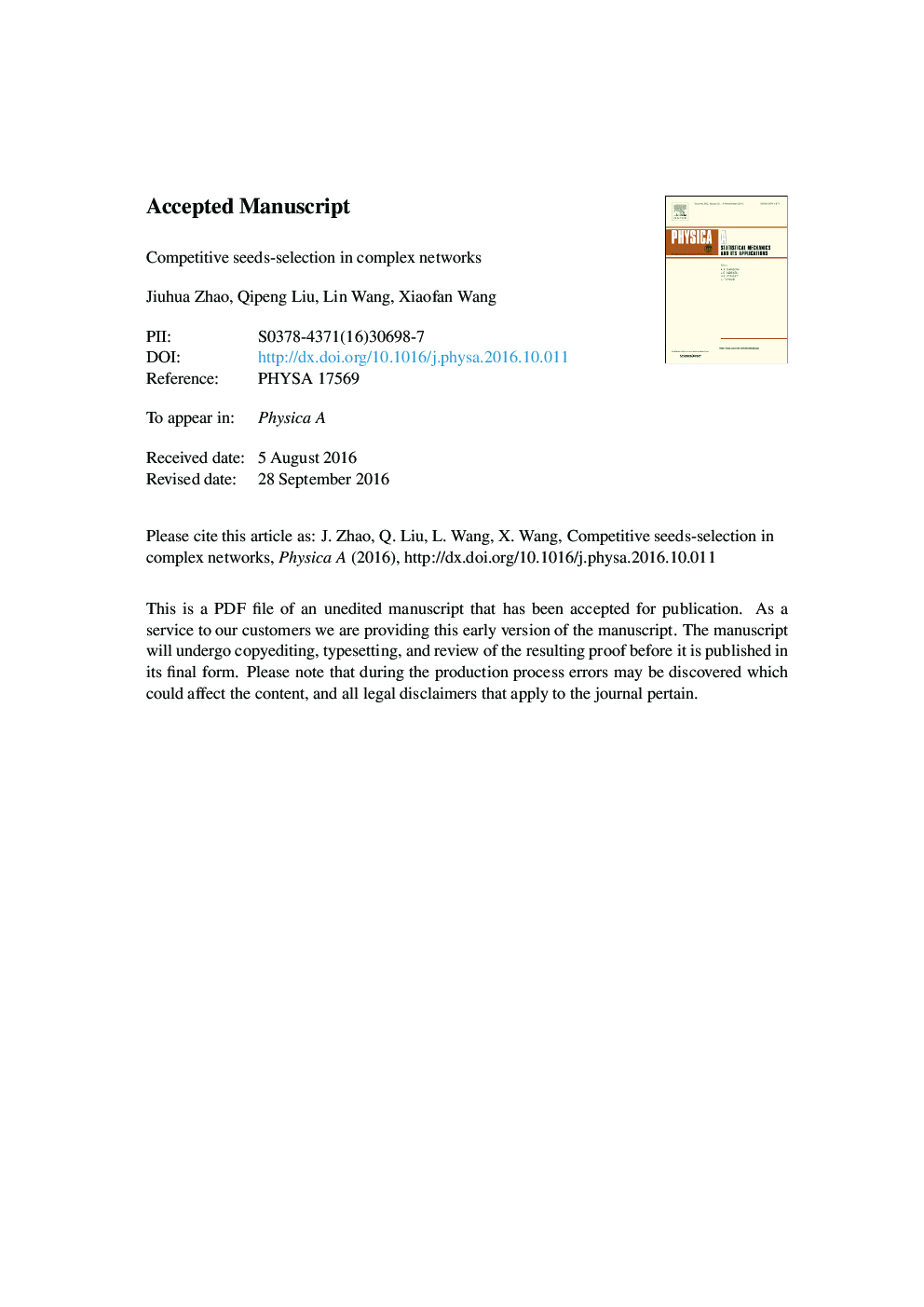| Article ID | Journal | Published Year | Pages | File Type |
|---|---|---|---|---|
| 5103447 | Physica A: Statistical Mechanics and its Applications | 2017 | 21 Pages |
Abstract
This paper investigates a competitive diffusion model where two competitors simultaneously select a set of nodes (seeds) in the network to influence. We focus on the problem of how to select these seeds such that, when the diffusion process terminates, a competitor can obtain more supports than its opponent. Instead of studying this problem in the game-theoretic framework as in the existing work, in this paper we design several heuristic seed-selection strategies inspired by commonly used centrality measures-Betweenness Centrality (BC), Closeness Centrality (CC), Degree Centrality (DC), Eigenvector Centrality (EC), and K-shell Centrality (KS). We mainly compare three centrality-based strategies, which have better performances in competing with the random selection strategy, through simulations on both real and artificial networks. Even though network structure varies across different networks, we find certain common trend appearing in all of these networks. Roughly speaking, BC-based strategy and DC-based strategy are better than CC-based strategy. Moreover, if a competitor adopts CC-based strategy, then BC-based strategy is a better strategy than DC-based strategy for his opponent, and the superiority of BC-based strategy decreases as the heterogeneity of the network decreases.
Keywords
Related Topics
Physical Sciences and Engineering
Mathematics
Mathematical Physics
Authors
Jiuhua Zhao, Qipeng Liu, Lin Wang, Xiaofan Wang,
